Rome
Rome’s Treasures and Delights: Exploring the Eternal City
Rome, Italy, stands proudly as one of the world’s top tourist destinations, and its popularity is well-deserved. This city is a true treasure trove of history and culture, offering something enchanting for every visitor. Whether you have a fascination with ancient relics, a craving for world-class art, a passion for delectable cuisine, or simply a desire to soak in the captivating atmosphere, Rome is ready to captivate your heart.
Tourists of all ages and interests will find Rome to be an ideal destination. Families can delight in kid-friendly attractions like the Colosseum, the Roman Forum, and the magical Trevi Fountain. History enthusiasts will be drawn to the countless opportunities to immerse themselves in the city’s captivating past.
And for the food enthusiasts among us, Rome unfolds as a culinary paradise, where restaurants serve up a delightful array of traditional Italian dishes and international flavors. Rome, truly, is a city that caters to the dreams and desires of every traveler.
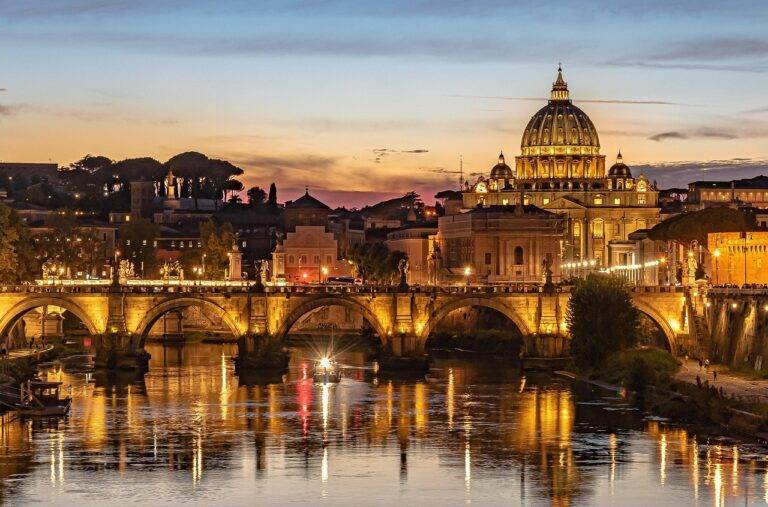
History: Where It All Began
Rome is an ancient city with a rich history that dates back over two thousand years. It was once the heart of the powerful Roman Empire, one of the greatest civilizations in history. In fact, the city was founded way back in 753 BC!
The Roman Empire:
At the height of its power, the Roman Empire stretched from England to Egypt, and from Spain to Syria. The Romans were known for their impressive architecture, engineering, and governance. They built magnificent structures like the Colosseum, aqueducts, and roads that still stand today.
Emperors and Gladiators:
Rome was also home to famous emperors like Julius Caesar and Augustus, as well as legendary gladiators who fought in the Colosseum. The history of Rome is filled with stories of conquest, intrigue, and innovation.
The Pax Romana:
The pinnacle of Rome’s power and prosperity was reached during the Pax Romana, an era of relative calm and economic flourishing spanning from 27 BC to 180 AD.
During this remarkable period, Rome embarked on ambitious construction projects that left an enduring mark on the empire. They built an intricate network of roads, sturdy bridges, and impressive aqueducts that not only connected the vast Roman territories but also facilitated the exchange of ideas, goods, and culture. Rome also evolved into a hub of intellectual activity, where some of the most brilliant minds and talented artists of the time found their inspiration and audiences.
As time marched forward, the Roman Empire eventually faced decline and fragmentation, ultimately leading to its fall. However, Rome itself endured as a city of enduring importance. In the Middle Ages, it became the spiritual center as the seat of the Catholic Church, hosting the Vatican City within its boundaries. This new role elevated Rome’s significance in the realm of religion and the Christian faith.
The Renaissance:
Later, during the Renaissance, a period of renewed enthusiasm for art, science, and literature, Rome experienced another cultural renaissance of its own. Visionaries, artists, and scholars flocked to the city, breathing fresh life into its streets and monuments. It was a time when magnificent works of art and architecture, like the Sistine Chapel’s awe-inspiring ceiling painted by Michelangelo, emerged as enduring symbols of human creativity.
What It’s Like Today?
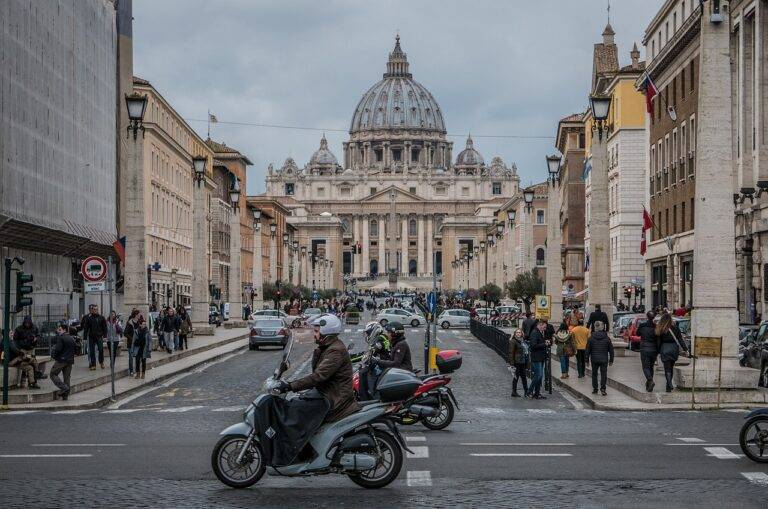
Rome is a large and bustling city, with a population of over 2.8 million people. The city is divided into 22 districts, each with its own unique character. The city center is home to many of Rome’s most famous tourist attractions, such as the Colosseum, the Trevi Fountain, and the Pantheon. The outskirts of the city are more residential, but there are still many things to see and do, such as visiting the Catacombs of Rome or hiking the Appian Way.
Transportation:
Getting around Rome is relatively easy, thanks to its extensive public transportation system. You can hop on buses, trams, and the subway to explore the city. Walking is also a great way to see Rome, as many attractions are within walking distance of each other.
Weather:
Rome enjoys a Mediterranean climate, which means mild winters and hot, dry summers. If you prefer pleasant weather, spring and autumn are the best times to visit. Summers can be scorching, so be prepared for the heat.
Culture:
Italians are known for their warm hospitality, and Rome is no exception. You’ll find friendly locals who are more than happy to help you with directions or recommendations. Don’t forget to try some delicious Italian cuisine, including pasta, pizza, and gelato!
Interesting Tidbits:
Did you know that there are over 900 churches in Rome? Or that the Trevi Fountain collects about 3,000 euros in coins every day, which is donated to charity? These are just a couple of the many fascinating facts about the city.
Moreover, Rome is often called the “Eternal City” because of its enduring influence on art, culture, and politics. It’s also home to Vatican City, the smallest independent state in the world, where the Pope resides.
What Is Rome Known For?
Rome is a city brimming with renowned attractions that beckon travelers from across the globe. While we’ve already mentioned some of the iconic sites, there’s even more to discover in this enchanting city.
The Colosseum:
This ancient amphitheater is an iconic symbol of Rome. It could hold up to 80,000 spectators and hosted epic gladiator battles and other entertainment. Today, you can tour the Colosseum and imagine what it was like during its glory days.
The Vatican Museums:
Adjacent to St. Peter’s Basilica in Vatican City, the Vatican Museums house an awe-inspiring collection of art and historical treasures. From ancient sculptures to priceless Renaissance masterpieces, this museum is a paradise for art aficionados.
St. Peter’s Basilica:
This magnificent church is not just a place of worship but also a masterpiece of architecture. Its towering dome, designed by Michelangelo, offers panoramic views of the city, while the interior showcases exquisite artistry, including Bernini’s famous baldachin.
The Spanish Steps:
These 135 steps, adorned with vibrant azaleas in the spring, lead to the Trinità dei Monti church at the top. The Spanish Steps have long been a favored gathering place for both locals and tourists, making it a prime spot for people-watching.
The Trevi Fountain:
Undoubtedly one of the most famous fountains in the world, the Trevi Fountain is a magnificent Baroque masterpiece. Tossing a coin into its waters is believed to ensure your return to Rome.
The Roman Ghetto:
This historic neighborhood is a hidden gem, steeped in history. Explore its narrow streets, quaint piazzas, and taste the delicious Roman-Jewish cuisine that the area is known for.
The Catacombs of Rome:
Delve into the city’s underground history by visiting the catacombs, a network of ancient burial tunnels. These eerie yet fascinating sites offer a unique glimpse into Rome’s early Christian history.
Piazza Navona:
This lively square features elegant Baroque architecture and is known for its stunning fountains, including the famous Fountain of the Four Rivers by Gian Lorenzo Bernini.
Villa Borghese:
Escape the city’s hustle and bustle by wandering through the tranquil Villa Borghese Gardens. You can rent a paddleboat on the lake, visit the Galleria Borghese art museum, or simply enjoy a peaceful stroll.
The Mouth of Truth (Bocca della Verità):
Located in the portico of the Santa Maria in Cosmedin church, this ancient stone mask is believed to bite off the hands of liars. Test your honesty by placing your hand inside!
Appian Way (Via Appia Antica):
Explore one of the oldest and most important roads of ancient Rome. Lined with historic ruins, catacombs, and serene countryside, the Appian Way offers a step back in time.
These are just a few of the countless treasures that Rome has to offer. Each corner of the city reveals a new story, a new piece of history, and a new reason to fall in love with this timeless destination. Whether you’re an art enthusiast, a history buff, or simply seeking the charm of an ancient city, Rome’s abundant attractions promise to captivate your senses and leave you with lasting memories.
Reasons to Visit Rome
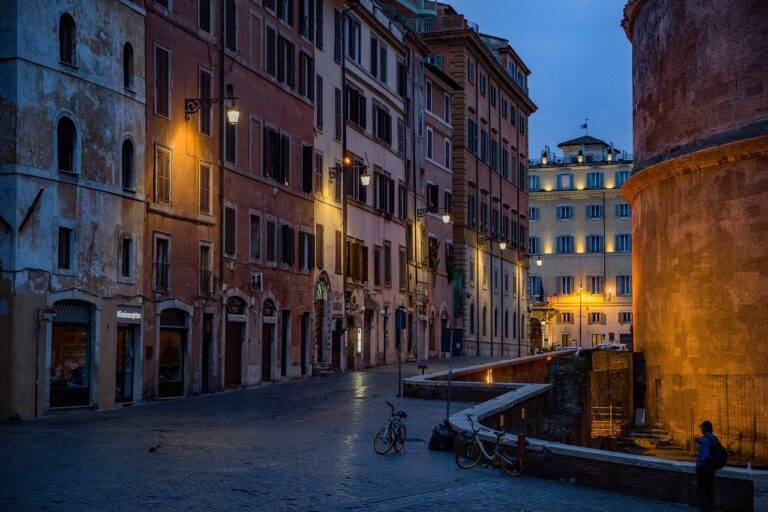
Now that you know what Rome is all about, let’s explore why it’s a fantastic destination for tourists.
1. Rich History:
If you have a passion for history, Rome is a treasure trove waiting to be discovered. You can walk in the footsteps of emperors, explore ancient ruins, and immerse yourself in the fascinating stories of the past.
2. World-Class Art:
Rome is home to some of the most renowned art and architecture in the world. From Michelangelo’s masterpieces to Bernini’s sculptures, you’ll be surrounded by artistic brilliance at every turn.
3. Delicious Cuisine:
Italian food is famous worldwide, and Rome is the perfect place to savor authentic dishes. Try mouthwatering pasta dishes, crispy pizza, and creamy gelato at local trattorias and pizzerias.
4. Vibrant Culture:
Rome’s lively street life, bustling piazzas, and outdoor cafes create a vibrant atmosphere that’s perfect for people-watching and immersing yourself in the local culture.
5. Spiritual Experience:
For those seeking spiritual enlightenment, a visit to the Vatican can be a profound experience. Attend a papal audience or simply soak in the spiritual ambiance of this holy place.
6. Romantic Getaway:
With its charming streets, fountains, and historic architecture, Rome is often considered one of the most romantic cities in the world. It’s an ideal destination for couples looking to celebrate their love.
7. Scenic Beauty:
While Rome is known for its historical sites, it also offers breathtaking natural beauty. The lush parks, such as Villa Borghese, provide a tranquil escape from the urban hustle and bustle.
8. Shopping:
Rome is a shopping paradise, offering everything from high-end fashion boutiques on Via Condotti to bustling markets like Campo de’ Fiori. You can find unique souvenirs, clothing, and accessories to take home.
So you see, Rome, Italy, is a captivating city with a rich history, vibrant culture, and an array of attractions to suit every traveler’s interests. If you’re into exploring ancient ruins, indulging in mouthwatering cuisine, or simply soaking up the ambiance of this enchanting place, Rome promises an unforgettable experience.
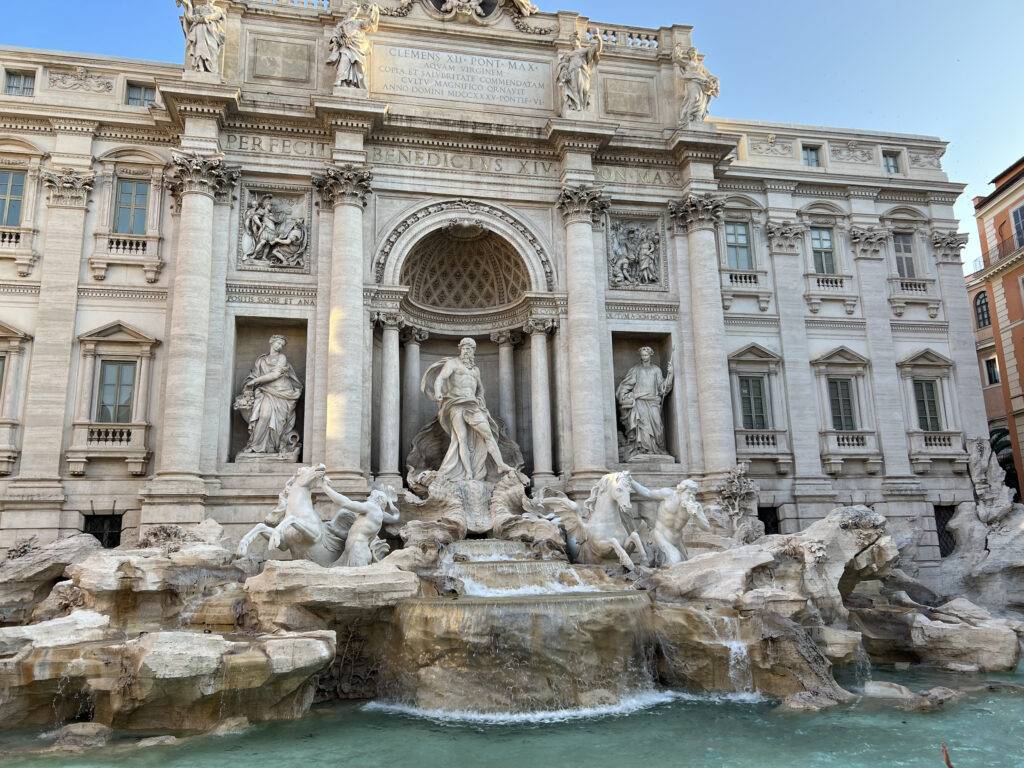
The Trevi Fountain of Rome, Italy
This Baroque masterpiece is one of the biggest attractions in Rome and, possibly, the most famous fountain in the world. Designed by Nicola Salvi and completed in 1762, it features a grand Neptune sculpture flanked by two Tritons and set against a backdrop of intricate rococo-style decorations. Visitors to the fountain traditionally toss a coin over their left shoulder into the water, hoping to ensure their return to Rome, Italy and ensure good luck. Our advice is to go early in the morning to avoid the crowds.
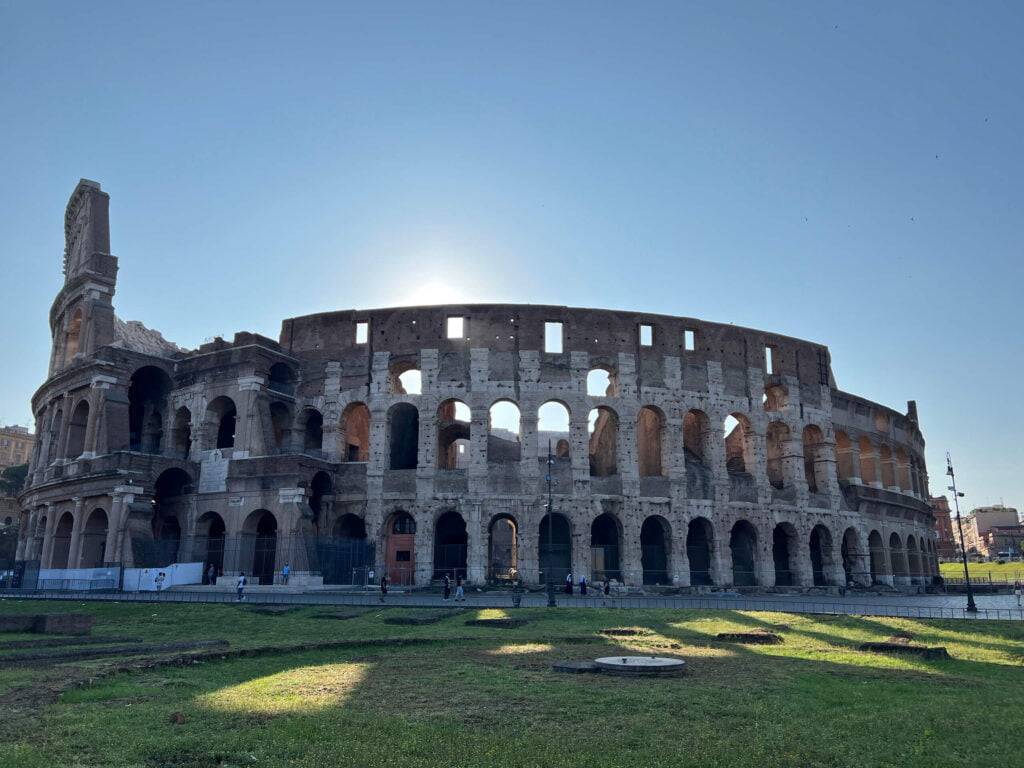
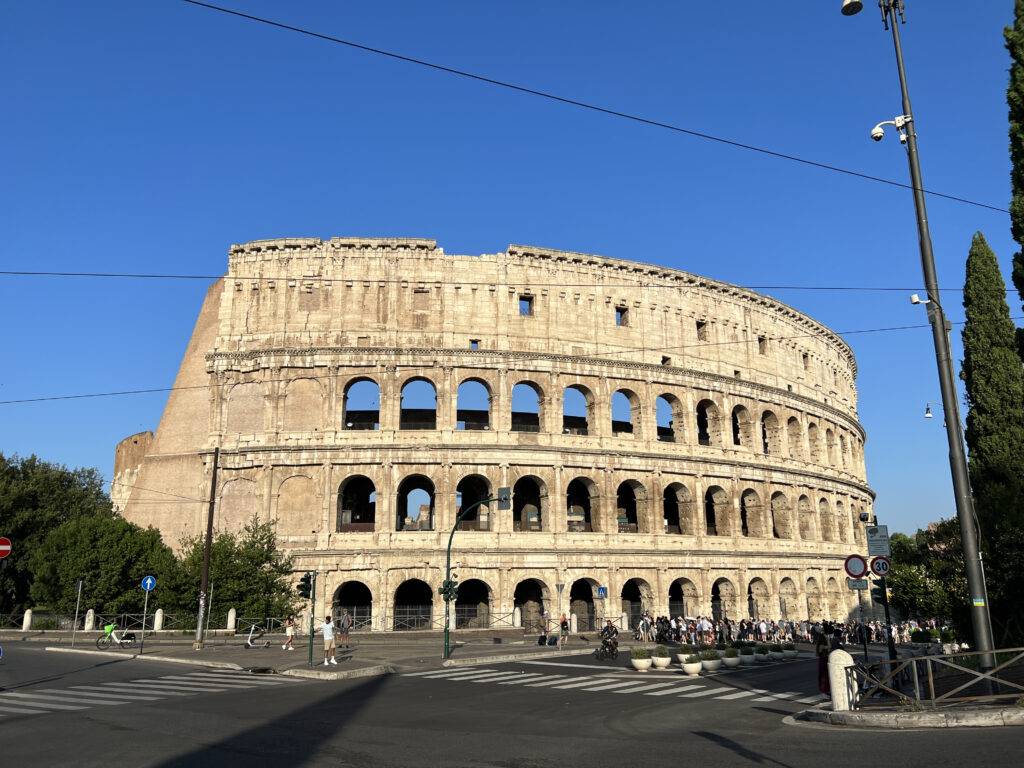
The Colosseum of Rome, Italy
The Colosseum, is one of Rome Italy’s most famous landmarks. Built between AD 70 and 80, it’s a colossal ancient amphitheater that used to host epic gladiator battles, wild animal hunts, and other public spectacles. This architectural marvel could hold up to 80,000 spectators!
The Colosseum has this iconic oval shape with a ring of towering tiers, making it instantly recognizable. It’s not just an architectural wonder; it’s a symbol of Rome’s grandeur and a UNESCO World Heritage Site.
Over time, the Colosseum has faced its share of earthquakes, fires, and quarrying, but preservation efforts have helped maintain its awe-inspiring presence. Today, it’s a major tourist hotspot, attracting millions of visitors each year who come to explore the history and culture of ancient Rome. It’s not just a building; it’s a window into a world of gladiators and the roar of the crowd.
If you want to explore the Colosseum in detail, you can book various tours here.
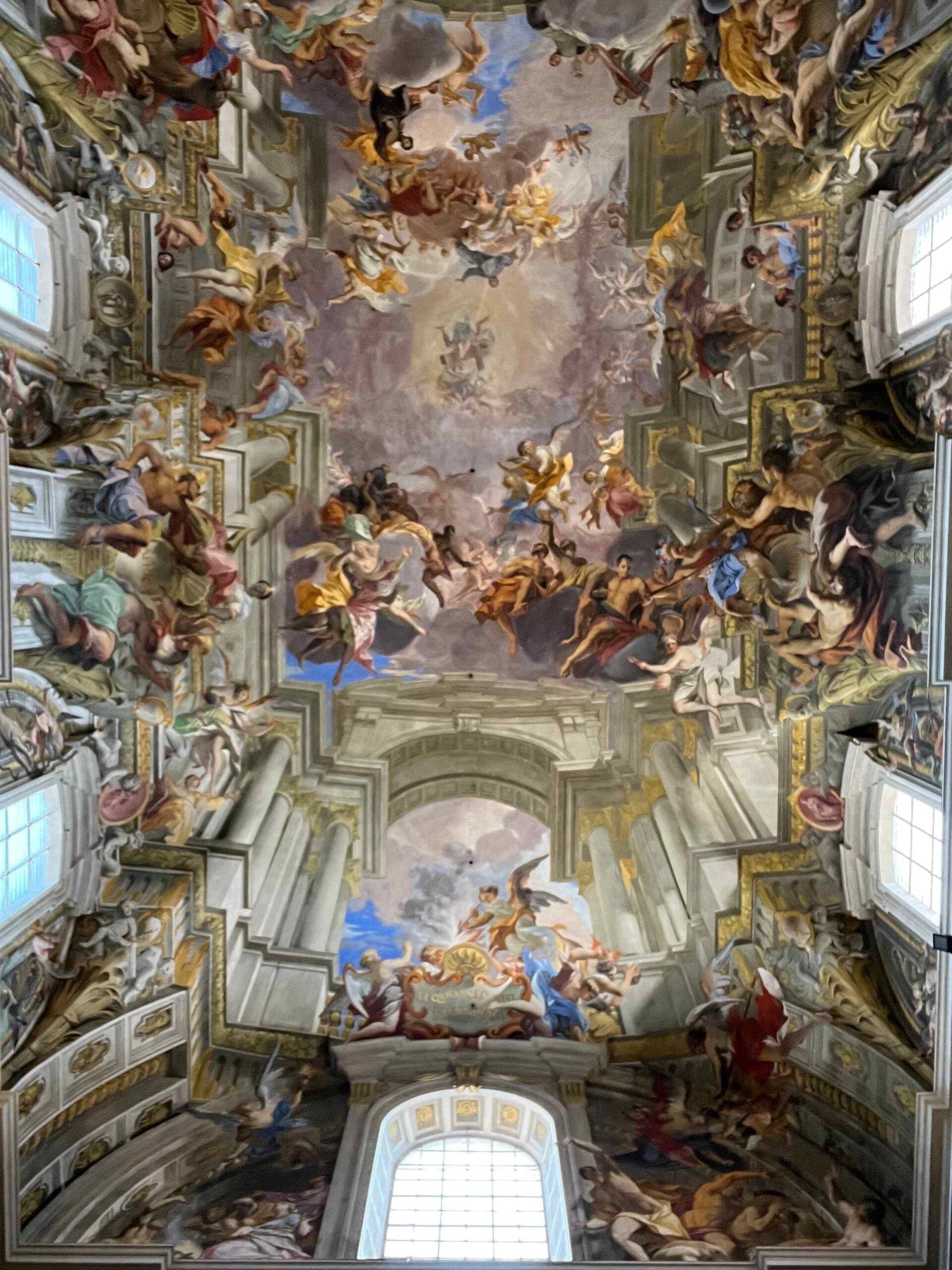
Sant’Ignazio Church in Rome, Italy
One of Romes best kept secrets. The Sant’Ignazio Church, also known as the Church of St. Ignatius of Loyola at Campus Martius, is a splendid Baroque gem in Rome, Italy, constructed between 1626 and 1650. It honors Saint Ignatius, the founder of the Jesuit order.
The church features a remarkable trompe-l’oeil (fool the eye) ceiling, painted between 1685 and 1694 by the Jesuit priest Andrea Pozzo. This masterpiece creates the illusion of a grand dome, even though the church lacks one. It’s adorned with a heavenly scene, angels, and saints, emphasizing the Jesuit order’s devotion to the Catholic faith.
Sant’Ignazio Church, with its Baroque grandeur and the power of illusion, is a must-visit for those exploring Rome’s cultural and historical heritage. It offers a captivating glimpse into the fusion of architecture, spirituality, and artistic brilliance in the 17th century.
You can find out more at this website https://santignazio.gesuiti.it/
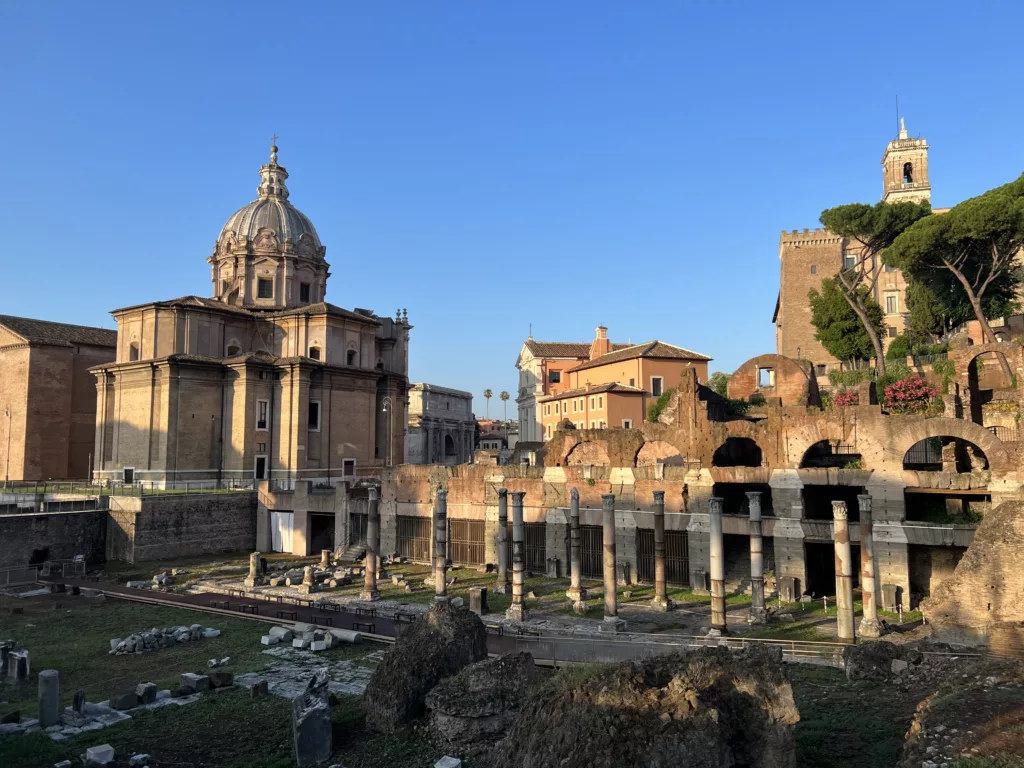
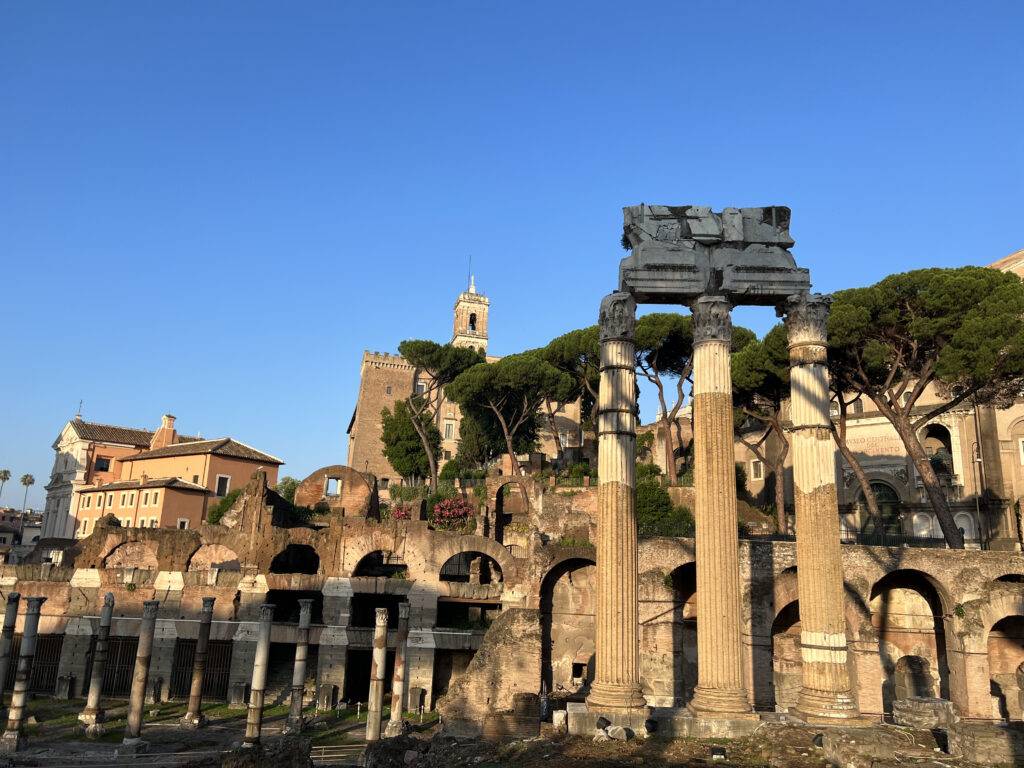
The Roman Forum
Situated in the heart of ancient Rome Italy, The forum served as the bustling civic, commercial, political and social hub of the Roman Empire for centuries.
This area was the centre of day-to-day Roman life for centuries. Lined with grand temples, basilicas, and statues, this historic site witnessed important political speeches, public gatherings, and various activities that shaped Roman history.

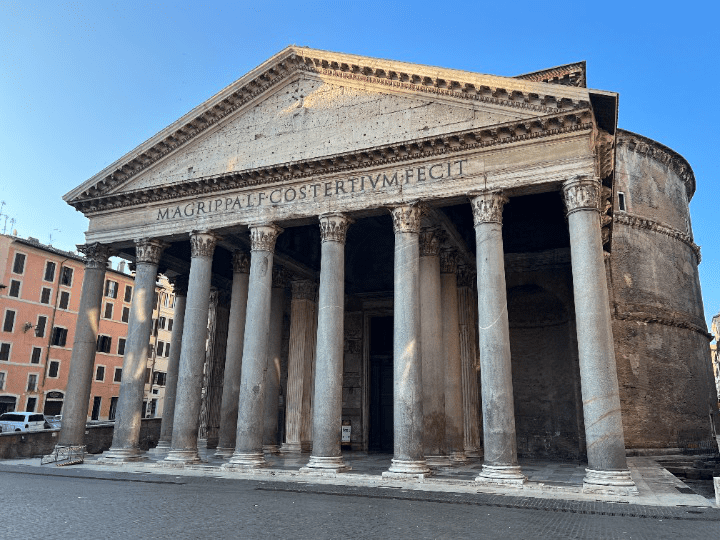
The Pantheon
This former Roman temple is an architectural marvel in the capital of Italy. The Pantheon stands as a testament to ancient Roman ingenuity and engineering. Its iconic dome, with its oculus open to the sky, showcases the brilliant interplay of light and space. At the same time, the building’s rich history as a pagan temple and later a Christian church adds to its timeless allure as a living link to Rome’s past.
There is almost always a long line to enter. Planning ahead is advised. If you want to go inside the Pantheon, you can book tickets in advance here.

7 Most Instagrammable Places in Milan
Milan: A City That Wows in Aesthetics! If I were to sum up Milan for

Brunch in Milan
While brunch is a huge thing in the USA, across Italy, people have not really

Speciality Coffee in Milan
Besides Milan being one of the most fashionable cities, it is also a place where

